Ever gazed at a piece of wood and wondered its origin? Dive in as we unravel the mystery of Honey Locust hardwood. Curious?
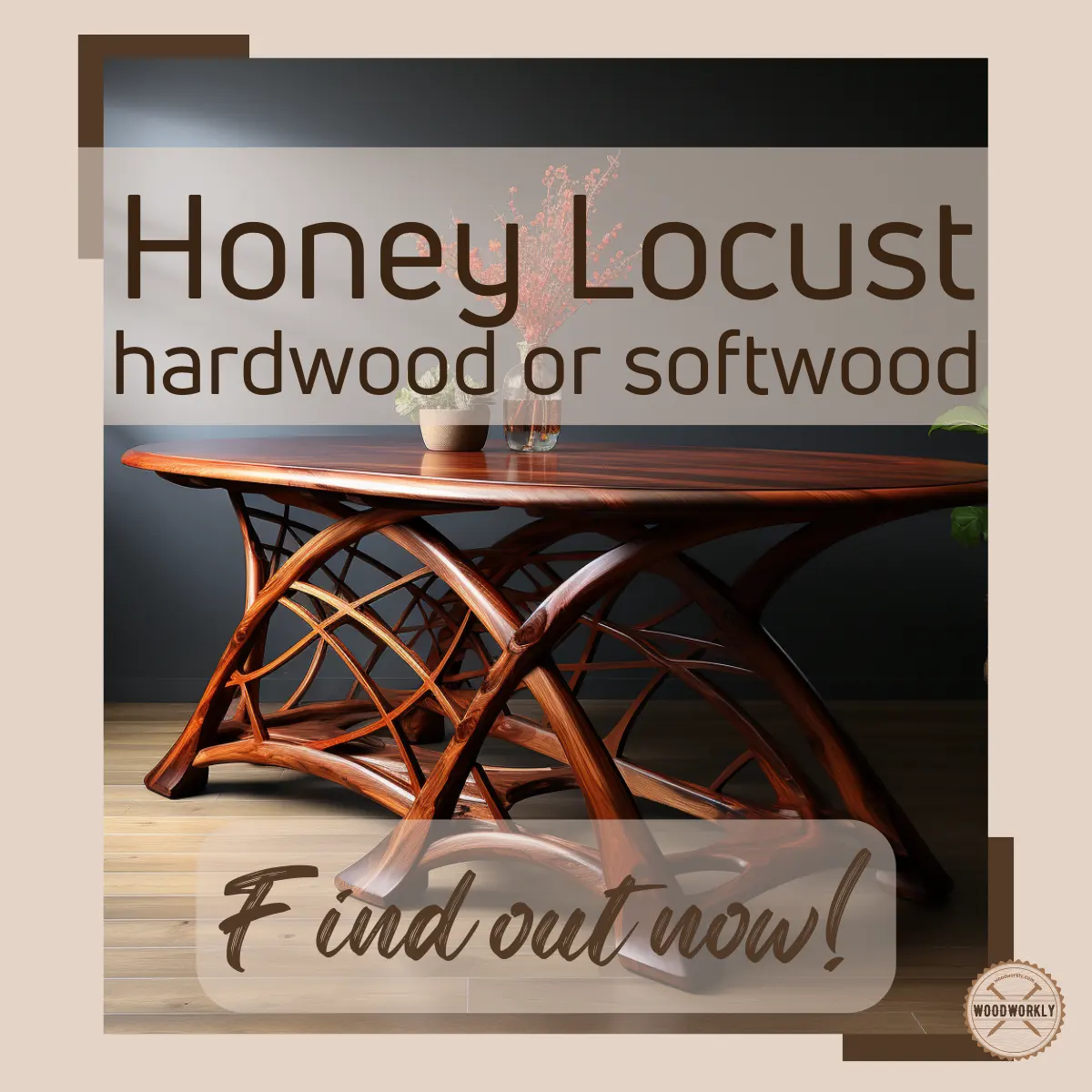
Honey Locust is a popular wood in many woodworking projects including making furniture, flooring, fence posts, tool handles, and many more.
When I was first working with Honey Locust, I was curious about its hardness since I was surprised by its excellent workability.
I did some research to find out how hard Honey Locust wood is and able to gather lots of info after interviewing some lumber experts.
So, let’s discuss, Is Honey Locust a hardwood
Yes, Honey Locust is a hardwood. It’s native to Central North America and is renowned for its dense, durable nature, making it suitable for various woodworking projects. Its rich color and unique grain texture also make it a popular choice among woodworkers.
But there’s more to know about the hardness of Honey Locust.

In this article, I’ll explore whether is Honey Locust a hardwood and how hard Honey Locust is by considering its characteristic features with uses.
Furthermore, I’ll answer some frequently asked questions as well.
Just keep reading!

First of all, let’s get a brief look at what is Honey Locust wood.
What is Honey Locust?
Honey Locust, scientifically known as Gleditsia triacanthos, is more than just a tree with a catchy name.
This fascinating tree is known for its unique appearance, resilience, and the plethora of uses it offers, especially in the woodworking world.
Honey Locust trees are distinctive, often recognized by their long, twisted thorns protruding from the trunk and branches.
These thorns are nature’s way of protecting the tree from herbivores.
When the sun hits its delicate, feather-like leaves, a dappled shade forms underneath, making it a favorite for those looking to escape the harsh summer sun.
Typically found in the Central Eastern United States, Honey Locusts have adapted to various climates and soil types.
You might stumble upon one during a casual walk in a park or even spot a cluster of them enhancing urban landscapes.
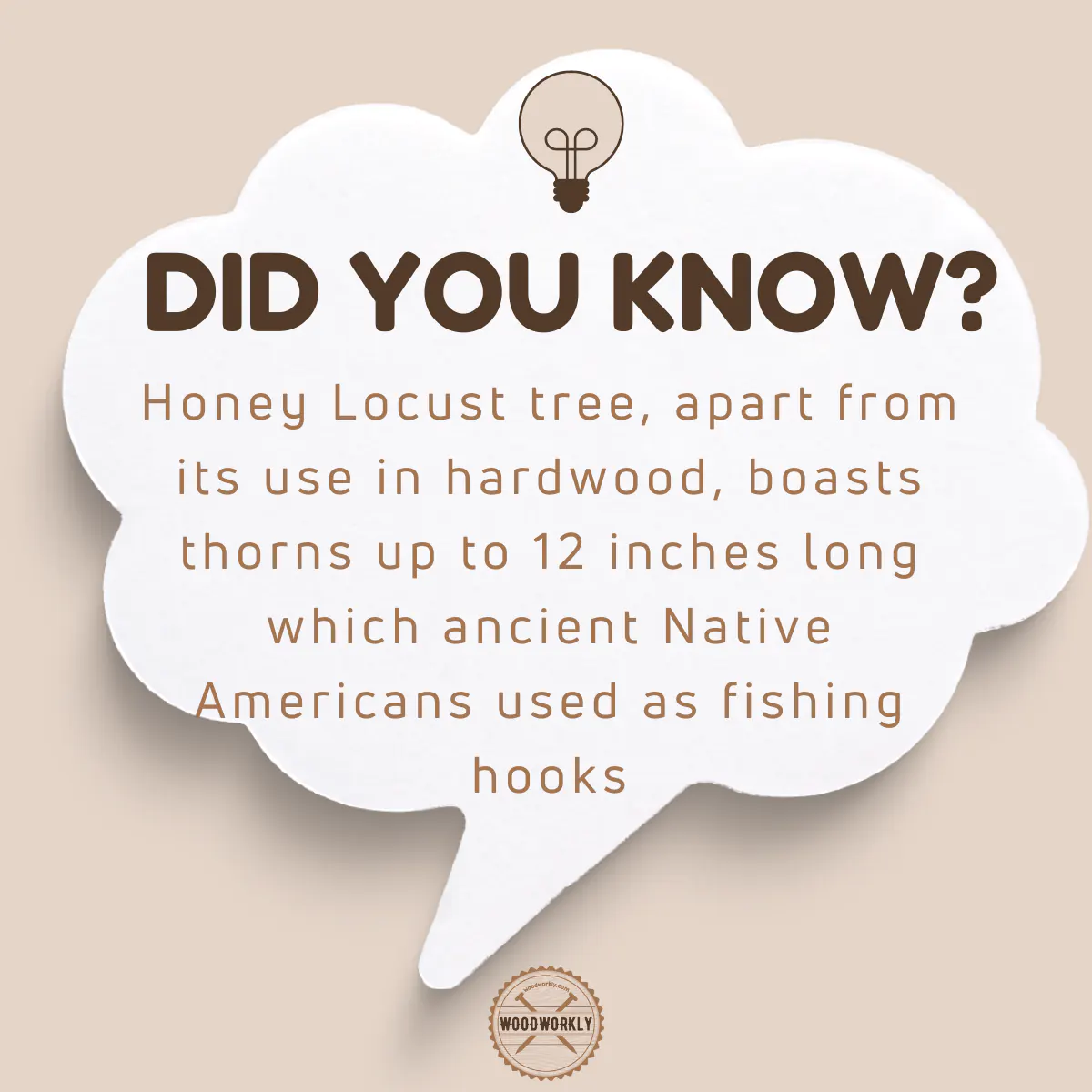
Honey Locust Evergreen or Deciduous?
According to some, Honey Locust is evergreen, so it’s essential to clarify a common misconception.
Honey Locusts are, in fact, deciduous trees. This means they shed their leaves annually, offering a spectacle of changing colors with the seasons.
Historical Significance and Personal Anecdotes
Did you know that Native Americans once used the thorns of the Honey Locust as needles?
It’s a little tidbit I came across during my early woodworking days.
I remember being at a workshop where a seasoned carpenter, Mr. Jacobs, showed us a Honey Locust thorn and narrated tales of its historical significance.
He said, “Back in the day, before our fancy tools, people saw potential in everything, even a simple thorn.”
As he spoke, I couldn’t help but marvel at how a single tree connected generations and fostered creativity.
Now let’s head back to out key area which is about the hardness of honey locust wood.
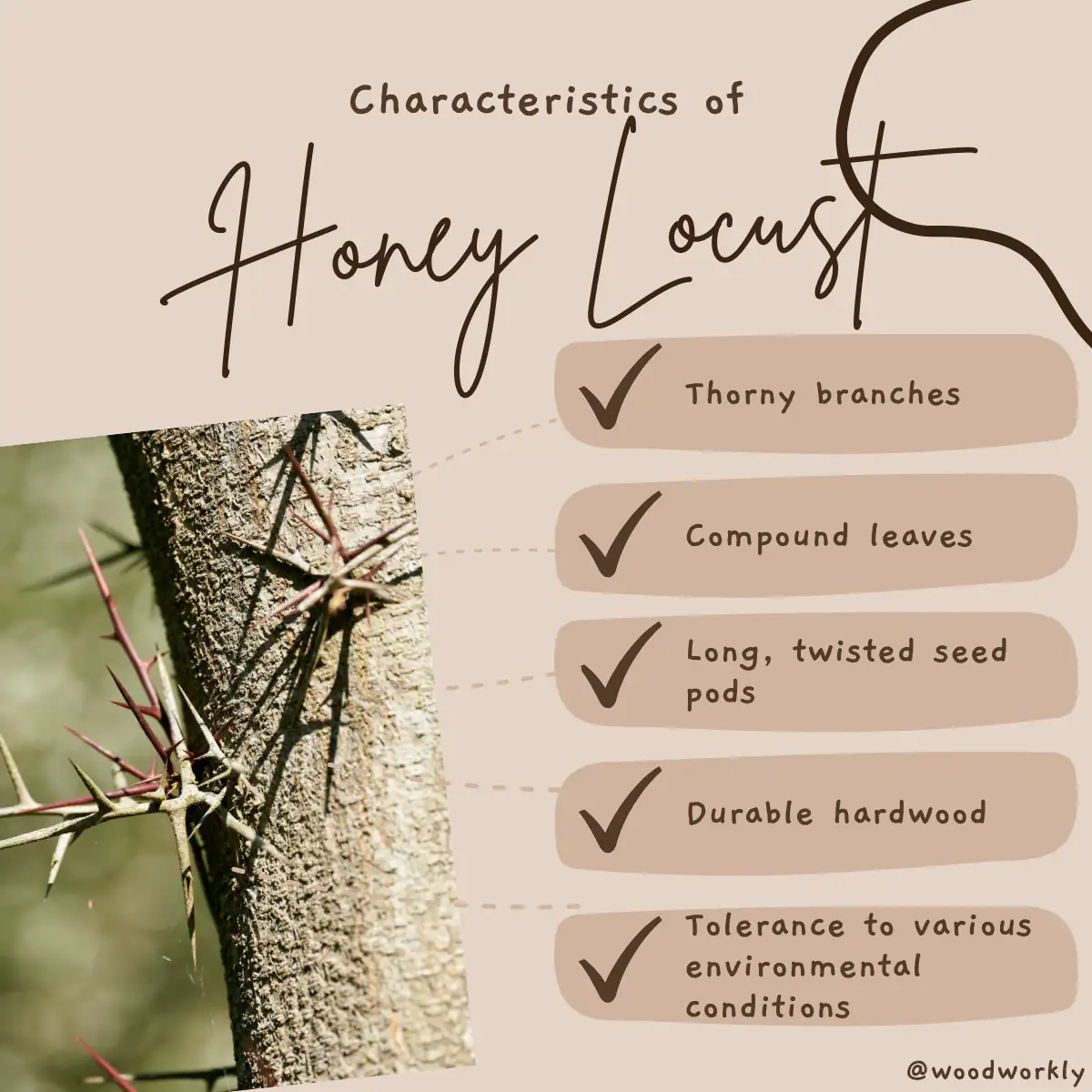
How Hard Is Honey Locust?
Honey Locust is undoubtedly one of the hardest woods on the planet. Therefore, it can be used for almost any domestic and industrial woodworking project without worrying about density and strength.
Honey Locust is harder than some popular hardwoods like Ash, Beech, Hard Maple, Oak, and Walnut. But it is softer than Hickory.
Janka hardness test is the standard method of testing the hardness of any wood considering its resistance to wear and shear.
If a particular wood has high wear and shear resistance, that means it has a high Janka hardness rating.
According to that, Honey Locust has a Janka hardness rating of 1,580 lbf (7,030 N) which is harder than many hardwoods and softwoods.
Because of having high hardness, Honey Locust is extremely durable and tough.
Being tough is not too good for woodworking tools since they will blunt and damage pretty quickly.
Honey Locust has good decay and rot resistance. Penetration of water molecules into the Honey Locust wood is difficult since it has high density.
Honey Locust is equipped with vessels, pores, and elements that are unique for hardwoods. It has a ring porous structure with a mostly straight grain pattern.
Honey Locust also come from deciduous trees like other hardwoods with no tyloses inside.
Basically, Honey Locust can be used for indoor and outdoor woodworking projects and furniture making with no issues because of having excellent hardness and density.
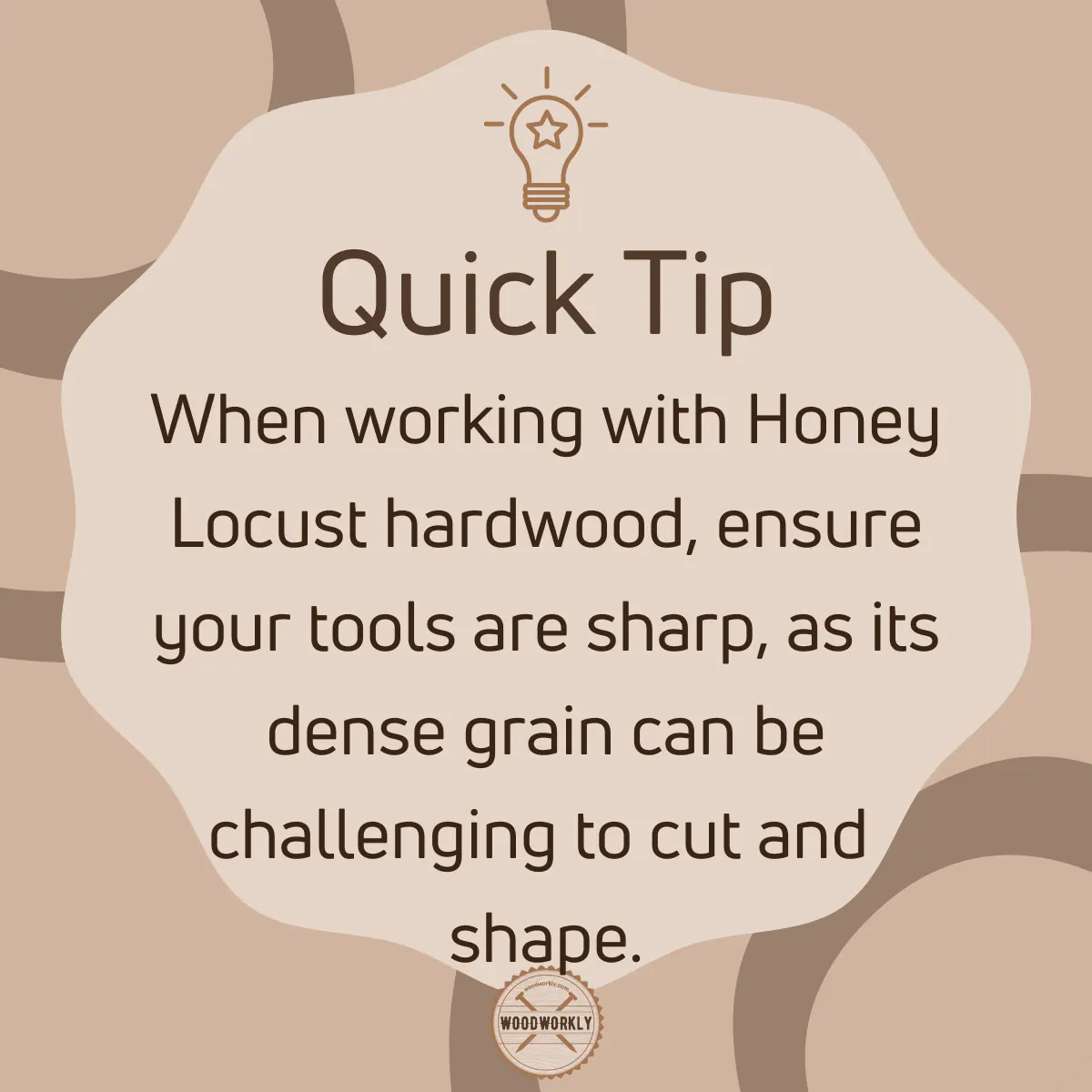
Hardness Of Honey Locust Compared to Other Woods
According to the Janka hardness test, the honey locust has a hardness rating of 1,580 lbf (7,030 N).
In order to get a better idea of the hardness of honey locust, you need to see the hardness of other popular woods as well.
Refer below the comparison chart to see how hard Honey Locust is compared to other popular woods,
| Wood species | Hardness value |
| Brazilian Walnut | 3,684 lbf (16,390 N) |
| Red Mahogany, Turpentine | 2,697 lbf (12,000 N) |
| Brazilian Cherry, Jatoba | 2,350 lbf (10,500 N) |
| Golden Teak | 2,330 lbf (10,400 N) |
| Hickory, Pecan, Satinwood | 1,820 lbf (8,100 N) |
| Honey Locust | 1,580 lbf (7,030 N) |
| Hard Maple, Sugar Maple | 1,450 lbf (6,400 N) |
| White Oak | 1,360 lbf (6,000 N) |
| Ash (White) | 1,320 lbf (5,900 N) |
| American Beech | 1,300 lbf (5,800 N) |
| Red Oak (Northern) | 1,290 lbf (5,700 N) |
| Yellow Birch / Baltic Birch | 1,260 lbf (5,600 N) |
| Teak | 1,155 lbf (5,140 N) |
| Black Walnut, North American Walnut | 1,010 lbf (4,500 N) |
| Cherry | 995 lbf (4,430 N) |
| Black Cherry, Imbuia | 950 lbf (4,200 N) |
| Red Maple | 950 lbf (4,200 N) |
| Mahogany | 800 lbf (3,558 N) |
| Douglas Fir | 710 lbf (3,158 N) |
| Silver Maple | 700 lbf (3,100 N) |
| Alder | 590 lbf (2,624 N) |
| Hemlock | 540 lbf (2,402 N) |
| Black Spruce | 520 lbf (2,313 N) |
| Sitka Spruce | 510 lbf (2,268 N) |
| Cypress | 510 lbf (2,268 N) |
| White Spruce | 480 lbf (2,135 N) |
| Redwood | 420 lbf (1,868 N) |
| Engelmann Spruce | 390 lbf (1,735 N) |
| Sugar Pine | 380 lbf (1,690 N) |
As you can see Honey Locust is extremely hard and durable compared to most other woods. It is placed well above most woods we usually use in the hardness comparison chart.
Let’s see the characteristic features of Honey Locust as a durable hardwood.
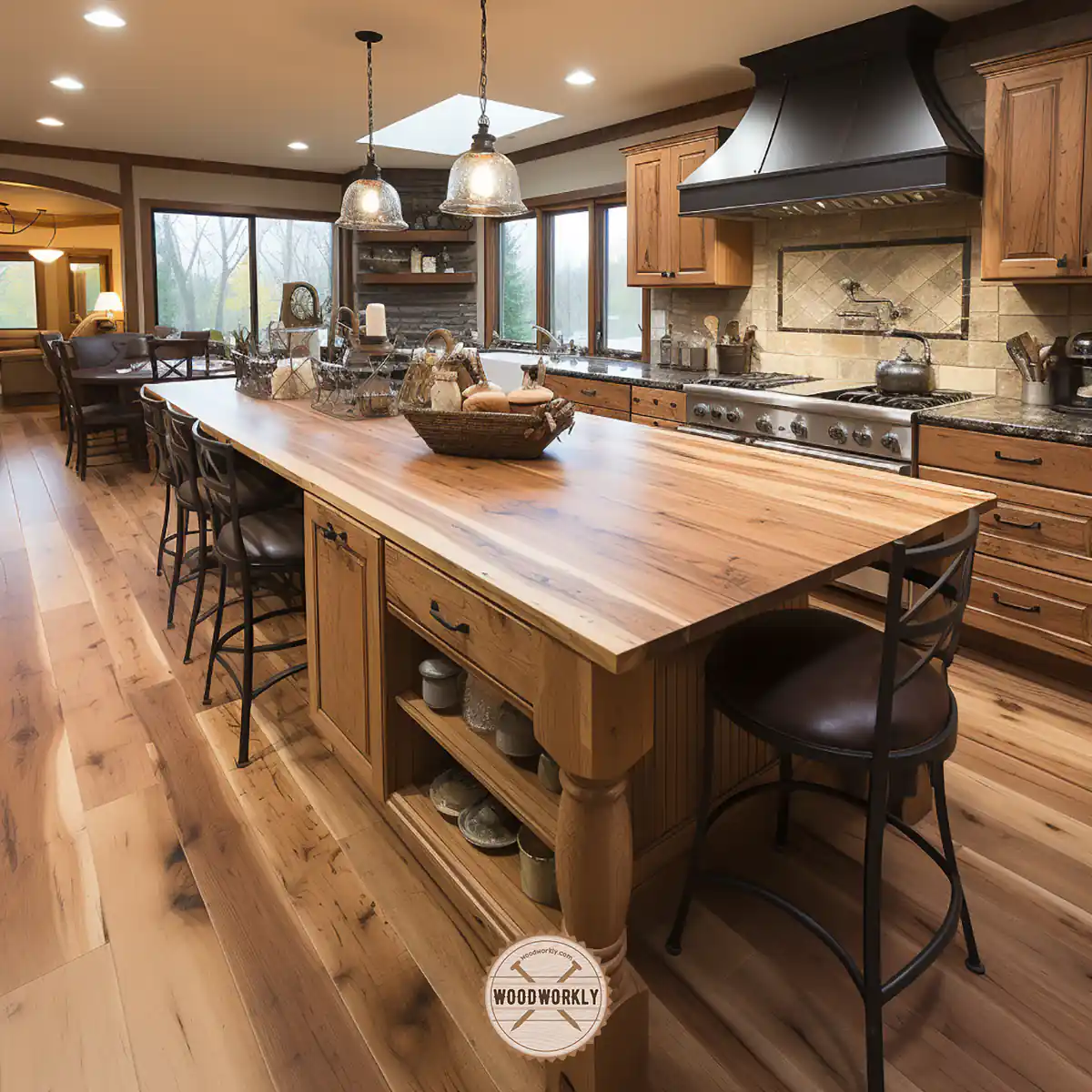
Honey Locust Characteristics
Honey Locust wood has a medium to reddish brown color with an extremely dense and strong fiber structure.
Because of being so dense, environmental moisture won’t penetrate well into the interior wood surface and this helps to protect Honey Locust from decaying and rotting.
But under extreme environmental conditions, Honey Locust may rot over time, and restoration with quality products like Flex Seal is recommended.
Even though Honey Locust is a hardwood, nailing, painting, screwing, staining and finishing are so much easy.
You can use Tung oil, Danish oil, or any other oil finish or lacquer or varnish to seal Honey Locust with an attractive look. It holds finishes so well.
But when it comes to workability, Honey Locust is not user-friendly because woodworking hand tools and power tools may get damaged or blunt due to high density.
But on the positive side, because of being so hard, durable, dense, and attractive, Honey Locust able to use for both interior and exterior woodworking projects.
Because of having good water resistance and moderate durability, Honey Locust is able to use for outdoor woodworking projects like fences, and patio furniture with no issues.
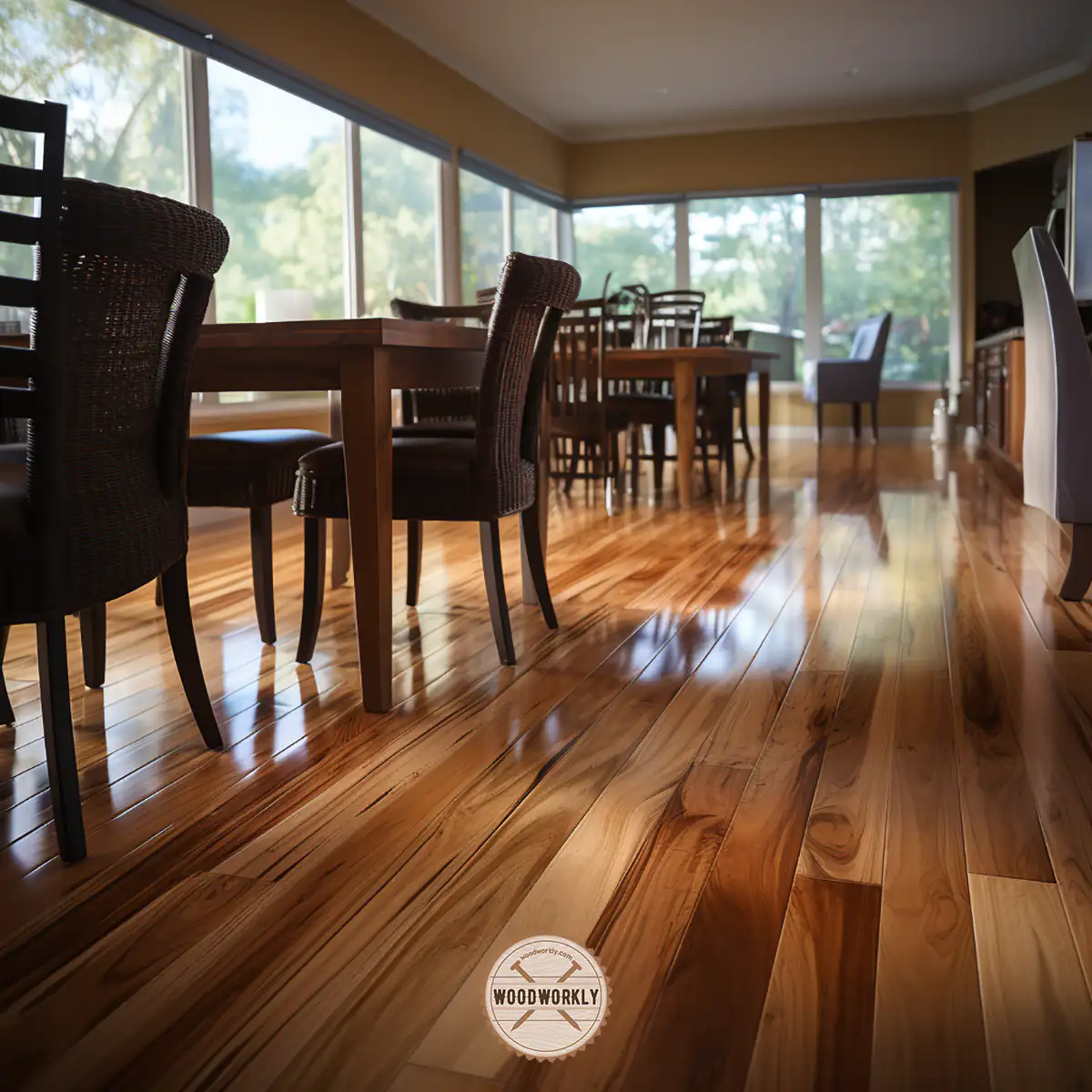
Honey Locust is lighter than white Oak and Hickory. It has similar mechanical properties as red Oak which is another great hardwood species.
Honey Locust doesn’t shrink or expand too much under temperature and humidity fluctuations due to high weather resistance as dense hardwood.
This makes Honey Locust keep from warping and cracking due to environmental changes. Overall, Honey Locust has high dimensional stability than many other kinds of wood.
In summary, here’re the top characteristic qualities of Honey Locust,
- Hardwood
- No characteristic odor
- High decay resistance
- Moderate durability
- Attractive
- High density
- Poor workability
- Excellent finishing properties
- Susceptible to insect attacks
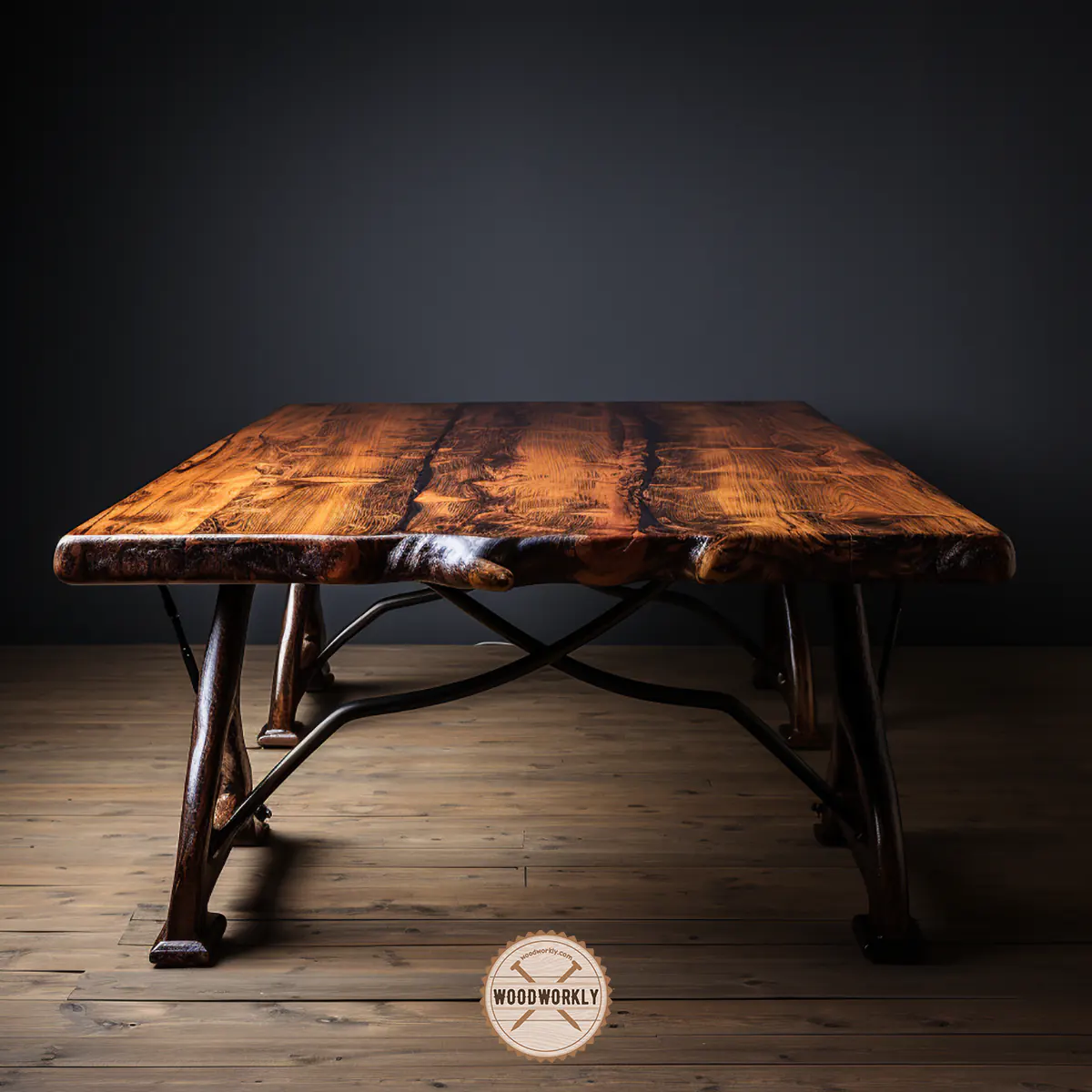
Properties of Honey Locust Wood
Here are the main characteristic features of Honey Locust,
| Color | Medium to light Reddish brown |
| Density | 670 kg/m3 |
| Wood Type | Hardwood |
| Hardness | 1,580 lbf (7,030 N) |
| Applications | Flooring, Fencing, Furniture making |
Because of having excellent characteristic qualities as a hardwood, Honey Locust is widely used for many domestic and industrial large woodworking projects.
So, let’s have a look at some advantages and disadvantages of Honey Locust as a hardwood.
Pros and Cons Of Honey Locust
| Pros | Cons |
| High density | Poor workability |
| High hardness | Prone to insect attacks |
| Decay resistant | Poor availability |
| Weather resistance | Moderately expensive |
| Attractive | |
| Great to use as a firewood |
As you can see Honey Locust has lots of benefits and it is an underrated wood in the woodworking world.
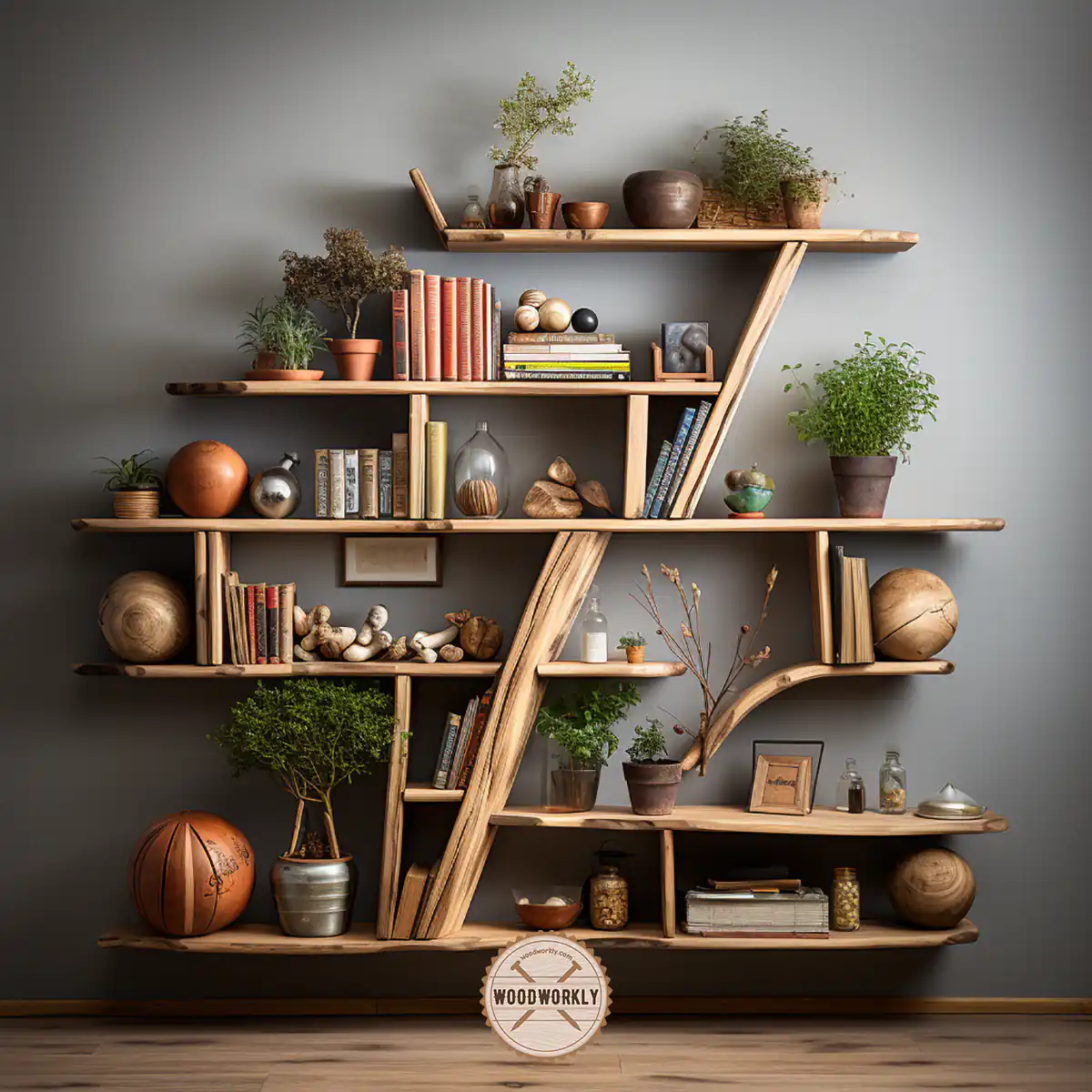
Let’s see some uses of Honey Locust as a hardwood.
What Is Honey Locust Used For?
As a dense hardwood, Honey Locust can literally be used for any project. It has good resistance against environmental elements as well.
Having high environmental resistance is especially important for outdoor furniture.
Here are some common uses of Honey Locust as a hardwood,
- Furniture making
- Fences making
- Paneling
- Constructions
- Turned objects
- Wood stove
- Firewood
- Tool handles
It can basically be used for anything.
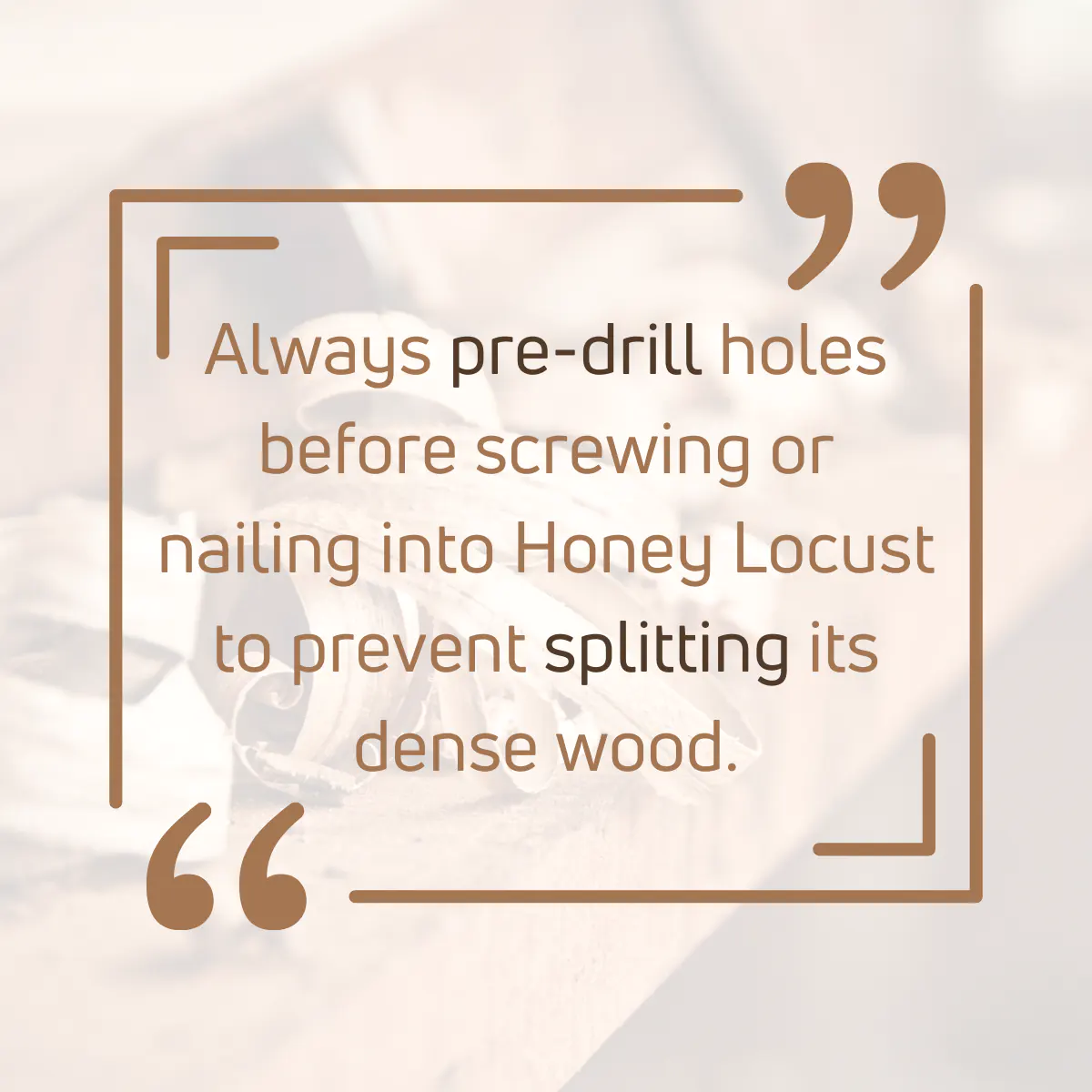
How Strong Is Honey Locust?
Honey Locust is one of the strongest woods on the planet due to its high hardness and density. It has significantly high compressive strength and bending strength compared to other woods.
Honey Locust is heavy and they can withstand high forces. Therefore, you can use Honey Locust for applications that carry heavy loads without losing their stability.
The compressive strength and bending strength of Honey Locust are as follows,
- The compressive strength of Honey Locust is 51.7 Mpa
- The bending strength of Honey Locust is 101.4 Mpa
The small pin knots of Honey Locust which are attached to the trunk increases the mechanical strength of the wood.
Overall, Honey Locust strength is comparable to Red Oak’s. Honey Locust is very strong is bending and durable when in contact with the surface.
This is why Honey Locust is popular in making fences. It has excellent strength, toughness, and high impact resistance to keep the wood stable for so long.
Now I’m going to share with you some tips and tricks that I’ve learned by working with Honey locust for a long time.
The below tips will take your honey locust projects to the next level.
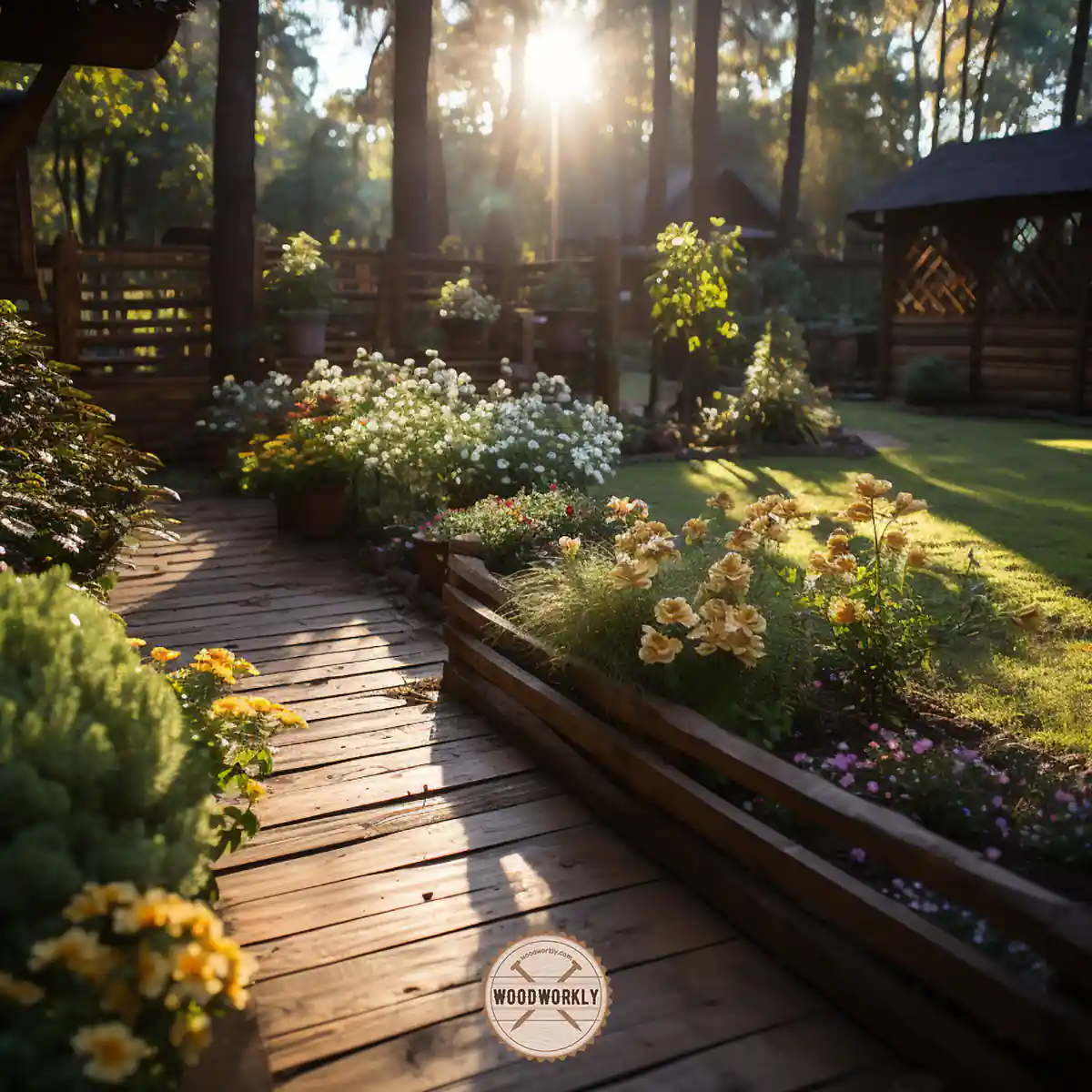
Tips For Working With Honey Locust Hardwood
Honey Locust hardwood, with its striking appearance and durability, is a favorite among woodworkers.
But, like every wood type, it comes with its quirks.
Here’s a little guide I’ve put together for fellow enthusiasts on how to get the best out of this beautiful wood.
Preparing for the Cut
Sharp Tools are a Must:
Given its density, Honey Locust can quickly dull blades. Always ensure your tools are sharp before starting.
I learned this the hard way when, on one of my initial projects, I ended up with rough cuts and a lot more sanding than anticipated.
Use a Slow Feed Rate:
When using machinery, especially saws, take it slow. A hasty cut could lead to the burning or tearing of the wood. Patience, as they say, is key!
Finishing the Wood
Sanding Secrets:
Start with a coarse grit and work your way up. Honey Locust can sometimes be a bit splintery, but thorough sanding ensures a smooth finish.
Remember that day when my workshop was filled with splinters? Lesson learned!
Choosing the Right Finish:
Due to its naturally beautiful color, a clear finish often works wonders for Honey Locust.
Oil-based finishes enhance its natural grain and give it a rich, lustrous sheen. I once used a tinted finish and, believe me, I regretted hiding its natural beauty.
Gluing and Joinery
Clean and Dry:
Ensure that the wood surface is clean and dry before applying any glue.
This hardwood’s density might resist some adhesives, so using a high-quality wood glue can make a difference.
I remember working on a Honey Locust chair and being too hasty with the gluing.
The result? I had to redo some joints. But on the plus side, it’s mistakes like these that teach you the most!
Safety First
Like with all woodworking, always prioritize safety. Honey Locust can produce dust that’s irritating to some.
Always wear protective gear, including safety glasses and a mask.
One of my workshop buddies, Mike, often said, “You can’t admire your work if you’re busy sneezing!”
It was during a Honey Locust project that he emphasized this the most. And he wasn’t wrong!
That’s it, folks! You learned a lot about the hot question, is Honey Locust a hardwood throughout this article.
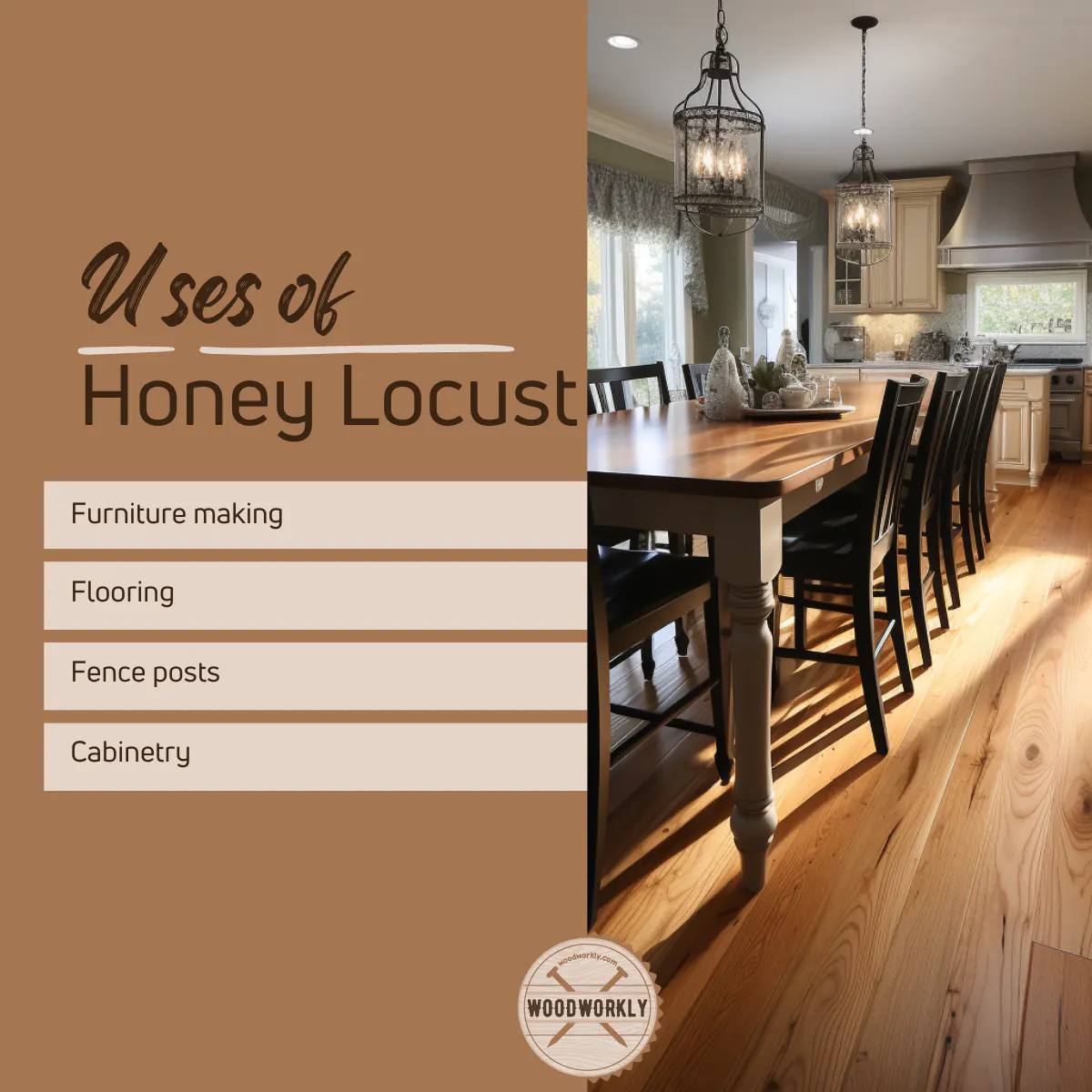
So, let’s compare the hardness of Honey Locust with the woods that we use in our day-to-day work.
Is Honey Locust Harder Than Oak?
Yes, Honey Locust is harder than Oak. Both Red Oak and White Oak are softer than Honey Locust.
But in reality, Honey Locust is almost the same hard as Oakwood. However, Oakwood can easily be replaced with Honey Locust apart from its poor availability.
According to the Janka hardness values, Honey Locust and Oak hardness is as follows,
| Wood Type | Hardness |
| Honey Locust | 1, 580 lbf |
| Red Oak | 1,290 lbf |
| White Oak | 1,360 lbf |
Can You Use Honey Locust For Cutting Boards?
Yes, you can use Honey Locust for cutting boards since it is a non-toxic hardwood with excellent durability.
But on the other hand, Honey Locust is too dense to take abuse with knife edges.
Overall Honey Locust is a food-safe wood you can use for cutting boards, butcher blocks, kitchen utensils, bowls, and other items.
Is Honey Locust Hard To Split?
Honey Locust is super easy to split since it is a hardwood with straight wood grain. Therefore, you can split Honey Locusts easily and use them for firewood since they dry more quickly than other woods.
Use a splitting axe or maul to split Honey Locust with ease.
Using unsharpened tools to split Honey Locust is not recommended since wood is too dense and your tools may easily get damaged or blunt.
Is Honey Locust Harder Than Hickory?
Hickory is harder than Honey Locust. Hickory is considered one of the hardest wood among domestic woods and it is stronger, tougher, and live longer than Honey Locust.
Hickory has good shock resistance and good dent resistance than Honey Locust.
According to the Janka hardness values, Honey Locust and Hickory hardness is as follows,
| Wood Type | Hardness |
| Honey Locust | 1, 580 lbf |
| Hickory | 1,820 lbf |
So, let’s answer some frequently asked questions.
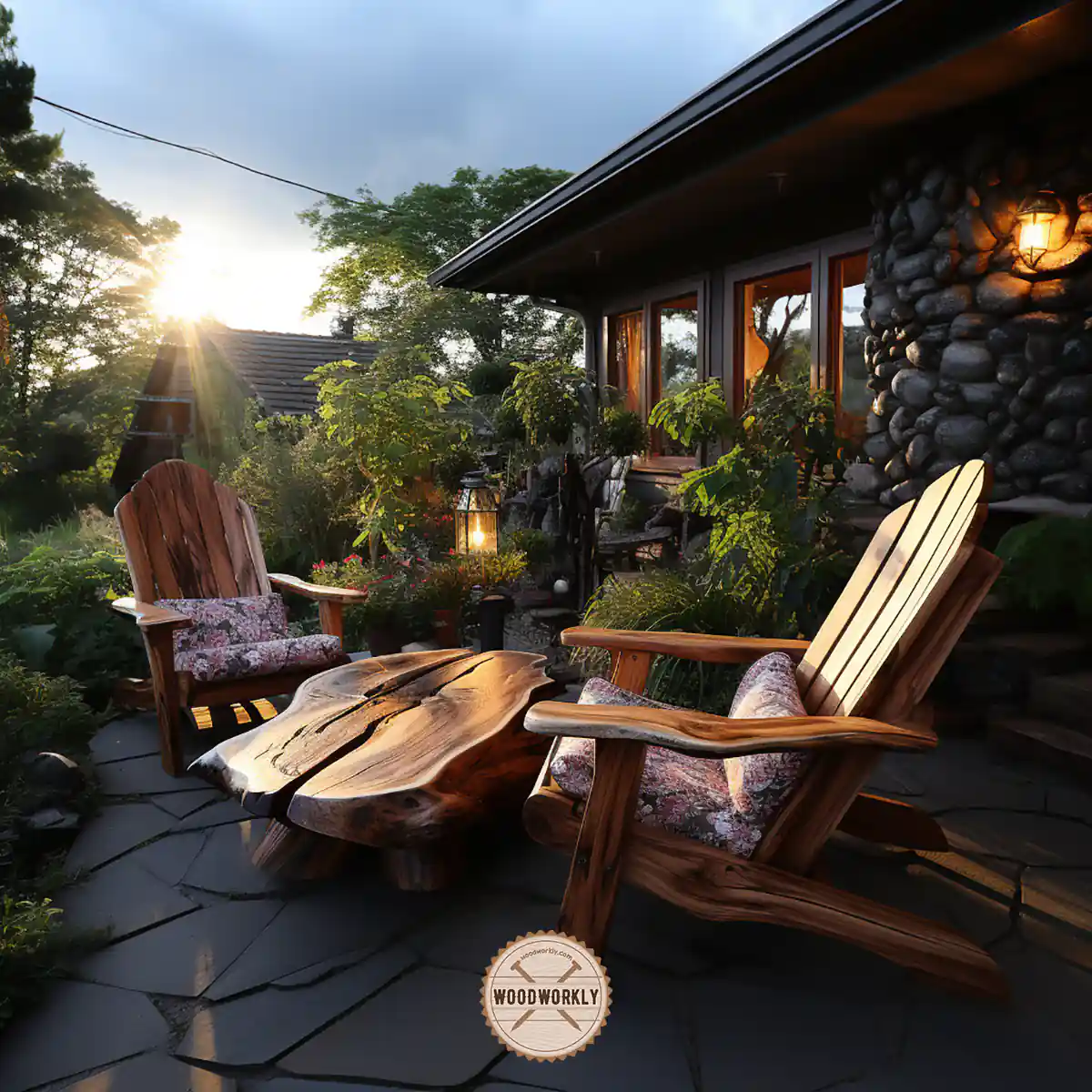
FAQs
What is the color and texture of Honey Locust hardwood?
Honey Locust hardwood boasts a rich range of colors from pale yellow to deep reddish-brown, with a usually straight, occasionally interlocked grain that gives it a unique texture.
Is Honey Locust wood suitable for outdoor projects?
Yes, due to its natural resistance to decay and rot, Honey Locust wood is an excellent choice for outdoor projects like decking and furniture.
Is it challenging to work with Honey Locust due to its hardness?
While Honey Locust is a dense wood, with the right tools and techniques, it can be successfully worked with, though it may pose a slight challenge to beginners.
Did I cover all you wanted to know about: Is Honey Locust A Hardwood?
In this article, we have deeply discussed, is Honey Locust a hardwood and how hard Honey Locust is by considering its properties, pros, and cons with its uses.
Yes, Honey Locust is a hardwood with high density, strength, and decay resistance. Honey Locust has a Janka hardness rating of 1,580 lbf (7,030 N) and it comes from a deciduous hardwood tree. It can be used for many domestic and industrial applications because of is hard, dense, and strong.
Furthermore, I’ve answered some frequently asked questions as well.
Hope you have gained good knowledge about, is Honey Locust a hardwood with its qualities.
Try to use Honey Locust for your next woodworking project and experience its hardness and how useful Honey Locust is for projects.
Happy woodworking with Honey Locust!